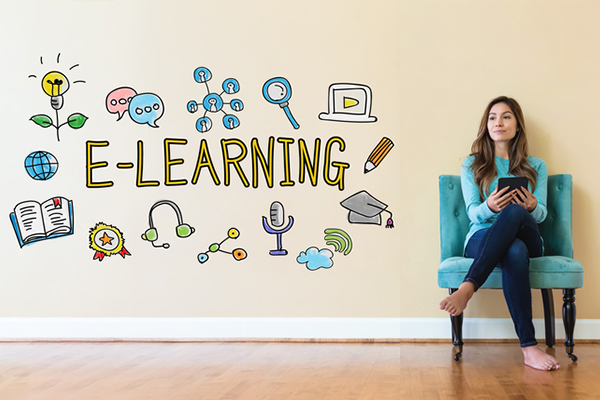Moving Forward with Continuous Learning
The rapid spread of COVID-19 caught many organizations and businesses off-guard. The ongoing health crisis has brought considerable uncertainty, impacting every aspect of the global economy. Millions of companies worldwide had never before considered circumstances where their entire workforce would be forced to function remotely.
 While governments around the world are balancing containment strategies, organizations across sectors continue to adapt where they can to maintain operations and serve their customers and constituents. Business-as-usual activities like training and performance initiatives may not have been deemed essential during the shutdown—even though the current situation makes the need to pivot and apply new knowledge more important than ever. Organizations that prioritize continuous learning, especially now, will emerge stronger than their competitors.
While governments around the world are balancing containment strategies, organizations across sectors continue to adapt where they can to maintain operations and serve their customers and constituents. Business-as-usual activities like training and performance initiatives may not have been deemed essential during the shutdown—even though the current situation makes the need to pivot and apply new knowledge more important than ever. Organizations that prioritize continuous learning, especially now, will emerge stronger than their competitors.
Looking past the pandemic
Learning and development strategies have always been about anticipating what lies ahead. According to the 2020 LinkedIn Workplace Learning Report, 51% of L&D professionals plan to launch upskilling programs this year, while 43% plan to launch reskilling programs to keep pace with ever-changing technology. Meanwhile, workers themselves are eager to advance in their careers. In the State of American Jobs, Pew Research reports that 87% of employees think it’s essential or important to develop new skills throughout their lives to keep up with the changing workplace.
While companies have shifted to remote working with meetings, sales calls, negotiations and transactions all taking place virtually, what can organizations do to support and empower their employees with continuous learning? Fortunately, there are forward-looking, collaborative digital solutions that facilitate ongoing workforce learning and help businesses progress during this prolonged period of social distancing.
Technology carries the day
As learning and development leaders, the imperative to stay ahead of the remote learning curve has never been more critical. Consider enhancing your learning strategy, designing a content transformation plan, streamlining your learning technology integration, and innovating your virtual training approaches. To support a successful remote workforce, take advantage of microlearning, informative videos, and interactivities to transition business practices such as onboarding new employees, technical training, virtual team building, leadership programs, or reskilling and upskilling existing teams.
Adoption of Experiential Learning Design for continuous learning is the foundation of a well-designed learning blueprint for the modern remote workforce. Not all learners excel at one type of learning so understanding how your learners engage and retain knowledge will provide the insight to optimal learning. Design business scenarios that are realistic and focus on short, specific tasks that otherwise may have been learned on the job. Create a virtual environment with simulations that target cognitive retention while employing obtainable objectives and continuous development.
One size does not fit all
To ensure a robust business continuity model, organizations must not neglect investing in learning and technology. They require a partner that understands their unique challenges, not an off-the-shelf solution. Continuous workforce learning keeps your staff engaged and ensures that your organization remains ahead of the game and further evolves in the post-pandemic world.
To find out how KnowledgeWorks Global Ltd. can help with your organization’s continual learning and transformation needs, please contact: info@kwglobal.com.

